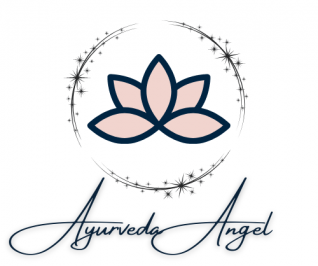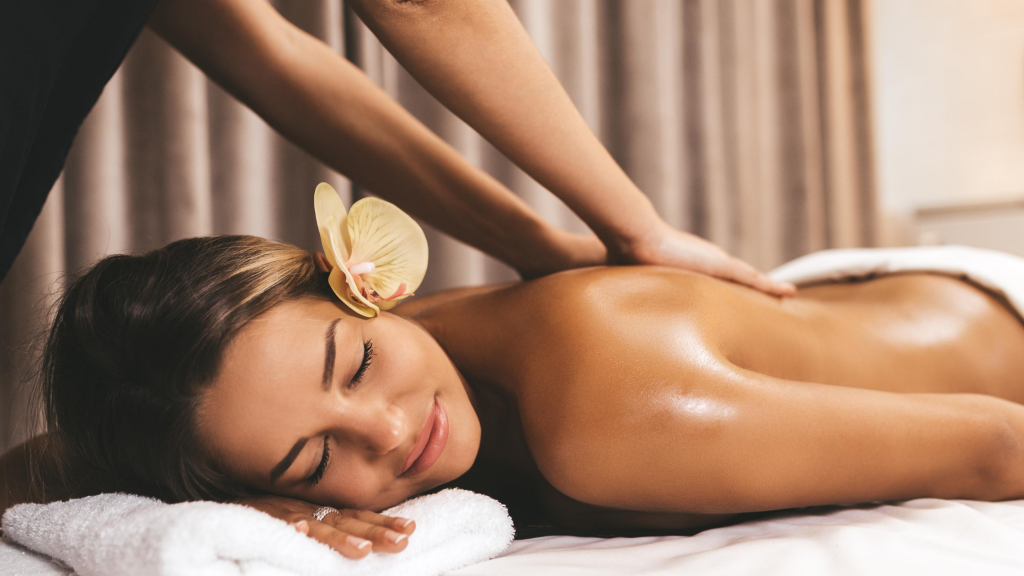Have you ever gotten a massage where oil was shot up your nostrils? If not, I’m guessing you probably haven’t had an ayurvedic massage.
Unlike the massages we can get at the mall here in the Western world, an ayurvedic massage lasts for up to 21 days, involves many rounds of treatments, and enforces a diet.
And it’s been practiced for centuries!
Over 5,000 years ago, the ancient Vedic culture developed the healing system of Ayurveda.
It originated in India and was passed orally by skilled masters to their apprentices.
Ayurveda is known as the “Mother of All Healing” and is grounded on the principle that health and wellness are highly reliant on the balance between the mind, body, and spirit.
To achieve that kind of balance, you can make several lifestyle changes—such as identifying your dosha, getting eight hours of sleep, and practicing yoga.
But when you’re feeling super out of balance, need to purge your body of impurities, or simply want to embark on a once-in-a-lifetime, three-week adventure, you can undergo an ayurvedic massage.
Not only has it been around for thousands of years, but it’s still widely practiced in India today. In fact, Ayurveda is still one of modern-day India’s official healthcare systems.
But before you book a trip to India, I’ve got some news for you:
You can do an ayurvedic massage yourself, right from home!
What Is an Ayurvedic Massage?
Ayurvedic massages are a vital feature of ancient and modern Ayurveda.
This type of massage is far from the usuals you see at local spas.
Instead, an ayurvedic massage is the combination of ayurvedic principles and pressure points. It’s also known as an “oil massage,” as it uses a customized blend of herbs and oil.
The goal of an ayurvedic massage is to balance the mind, body, and spirit—the key principle of Ayurveda.
Life and each individual person is comprised of the five elements—space, fire, earth, air and water.

These five elements are grouped into three mind-body principles called doshas (energies)—Vata (air and space), Pitta (fire and water), and Kapha (water and earth).
Every person has a unique mix of the three and the goal of Ayurveda is to keep them in balance to manage the emotional and physical health of a person.
So during an ayurvedic massage, the oils used are tailored based on the dominant dosha in the specific person. Used at a prescribed temperature, the blend of warm ayurvedic herbs and organic oils enters the pores of the skin and binds the ama (toxins), and is released to cleanse the body.
In Ayurvedic spas, the therapist focuses on unblocking the energy channels of the body and balancing the chakras (energy center).
They use massage techniques such as tapping, kneading, squeezing and traditional massage strokes. Similar to the herbs and oils used, the combination of techniques is also dependent on the person’s dosha composition and needs.
But you don’t have to find a spa that offers ayurvedic massages to get the perfect one.
Doing an ayurvedic massage on yourself daily can restore the balance between the doshas, improve your overall wellness, and boost your immune system.
Stay tuned to the end of this blog post to see just how you can start running a DIY ayurvedic spa in your home!
Benefits of an Ayurvedic Massage
Not only are ayurvedic massages great for relaxing, but they also have tons of health benefits. These benefits include:
- Nourishing the body and reducing the effects of aging.
- Invigorating the muscles and body tissues.
- Loosening the joints and increasing blood circulation.
- Stimulating the internal organs.
- Aiding in detoxifying and eliminating toxins from the body.
- Increasing stamina.
- Calming the nerves, reducing stress, and improving sleep patterns.
- Softening and smoothening the skin.
- Aiding in improving medical conditions and overall wellness.
- Boosting body awareness.
What to Expect During an Ayurvedic Massage
If you do ever decide to scout out your area for an ayurvedic spa, here’s what you can expect before you go in and while you’re receiving treatment!
Before diving into the massage, there’s a 15 to 20-minute consultation with a therapist.
From there, the therapist identifies your primary dosha and creates a customized menu or plan for the session, identifying which ayurvedic massage oils and strokes will be used.
Aside from the oil and the massage stroke menu, the therapist also prepares herself by concentrating her energy and synchronizing her breathing to preserve a deep connection with you as the client.
Once everything’s prepared, you’ll change into a robe and enter the massage area.
There, you’ll be welcomed with a relaxing atmosphere, soft music playing, and chants sounding in the background.
During the massage, you’ll lie in a warm massage bed and the therapist will pour warm oil on your body. This is when she’ll start massaging based on your prescribed strokes.
Depending on the treatment, one session usually lasts for about 60 minutes.
To maintain and prolong the results of the treatment, a therapist will recommend a diet for your dosha.
The diet is custom-made based on your needs and body type, and helps maintain the water-electrolyte balance in your body. It includes root vegetables, spices, meat (if you aren’t vegan or vegetarian), seasonal vegetables, seasonal fruits, raw honey, and sprouted grains.
Ayurvedic Massage: 7 Types of Treatments Plus How to Do Them at Home
There are seven basic types of ayurvedic massage. Each one serves a different purpose. You can modify these so you can do them at home.
Out of all the benefits, perhaps the best thing about an ayurvedic massage is that it’s one of the best acts of self-love.
Gently massaging your body, stroking your skin, treating yourself to a relaxation remedy, and putting yourself into a meditative state is one of the best feelings in the world—and allows you to form a much deeper connection and relationship with yourself.
I started making ayurvedic massages a daily ritual in the summer of 2019, when I was 17 years old. I started with Abhyanga, and it remains my favorite type of massage today.
Ready to dive deep into what might be the world’s oldest form of self-care rituals?
Let’s get rolling!
1. Abhyanga
One of the most traditional types of ayurvedic massage, Abhyanga uses warm herbal oil specific to your dosha and uses friction-based strokes.
It penetrates and loosens the toxins that the skin accumulates. Abhyanga enhances blood flow, improves the immune system, and creates deep relaxation in the mind and body.
2. Gandharva
Gandharva is a combination of touch and sound therapy to improve the flow of energy in the body. In this massage, the therapist uses warm herbal oil and crystal singing bowls to vibrate and reconstruct the cells in the body. Gandharva helps in promoting vitality and blissfulness.
3. Marma
Marma is the energy points found in the body, mind, and emotions used for healing in Ayurveda.
In this massage, the energy points are stimulated using dosha-specific herbal oils and light circular touches. A Marma massage stirs the inner healing system of the body, manipulates prana (subtle energy), increases the blood flow of the body, and soothes stiff muscles.
4. Odyssey Ayurvedic Massage Treatment
Odyssey Ayurvedic Massage Treatment uses five techniques in Ayurveda. Its goal is to treat your entire being—your mental, physical, and energy.
Two therapists conduct this massage. The treatment begins with Garshana, a dry-glove exfoliation to detoxify the body, prepare the skin for oil absorption, and stimulate the lymphatic system.
Next is Abhyanga, where your body—from scalp to toes—is lathered with warm herbal oil. Using friction strokes, the massage loosens the pores and dislodges the ama (toxins) from the body tissues.
The therapist will then do a slow and deep, powerful stroke of Vishesh to promote relaxation.
And last comes the finishing touch—a Marma massage and chakra balancing, using dosha-specific herbal oil.
5. Pizichilli
Also known as “oil bath,” Pizichilli is famous for the continuous stream of warm herbal oil that’s poured onto the body. Like the Odyssey Ayurvedic Massage Treatment, this massage also has two therapists for the simultaneous rhythmic strokes. Pizichilli is good for enhancing blood flow, detoxifying, and purifying the body.
6. Shirodhara
In Shirodhara, the therapist pours a stream of warm oil over the third eye charkra, also known as anja (energetic center of intuition). This promotes tranquility.
This treatment puts a focus on meditation and calms the central nervous system. As a result, people who undergo Shirodhara treatments often feel a sense of restful awareness.
7. Vishesh
Unlike the other types of treatments, Vishesh uses very little oil. This allows deeper access to the body tissues and a higher level of friction. If this massage is done after Abhyanga—which uses a massive amount of oil—the therapist removes most of the oils before proceeding. After the massage, the person feels light and relaxed.
Which Massage Is Best for Each Dosha?
The main objective of an ayurvedic massage is to bring your primary dosha into balance. So when it comes to doshas, a sign of total balance and health is when all three are balanced equally.
Massages for Kapha (Water and Earth)
Kapha dosha provides firmness, strength, and grounding energy to the mind. When balanced, Kapha dominant people have a sturdy build, lots of stamina, good digestion, a calm personality, and are good at dealing with stress.
 On the other hand, an excessive amount of Kapha dosha may result in depression, lethargy, obesity, apathy, and slow digestion. This is because when Kapha is out of balance, it tends to slow the entire body down.
On the other hand, an excessive amount of Kapha dosha may result in depression, lethargy, obesity, apathy, and slow digestion. This is because when Kapha is out of balance, it tends to slow the entire body down.
Additionally, people with a predominant Kapha dosha can be stubborn and resistant to change.
The Kapha dosha is hefty, cold, moist, and solid. It requires stimulation to stay mobile and balanced.
To do this, a person with predominant Kapha must live an active lifestyle to keep the dosha from being inactive.
Therefore, the best massage treatments for this type of dosha are stimulating, cleansing, and not too heavy on the oil.
The best ayurvedic massages to perform on a Kapha are:
- Vishesh – a deep tissue massage that uses minimal oil and does strong, slow strokes to elongate stiff muscles and release impurities.
- Garshana – a dry, brisk massage with no oil. This massage uses cotton, silk, or wool gloves to detoxify the body by lightly exfoliating the skin and stimulating blood and lymph flow.
- Swedana – a steam massage that reduces the stiffens and heaviness of the body. It also increases blood circulation and relieves joint and muscle pains.
- Udvartana – an invigorating and exfoliating lymphatic massage that stimulates the metabolism, improves skin conditions and reduces the appearance of cellulite.
- Neti – the flushing of sinuses by using warm salt water to alleviate congestion and nasal discharge. It also prevents upper respiratory infections.
Massages for Pitta (Fire and Water)
People with a predominant Pitta dosha have a fiery nature, both mentally and physically.
When in balance, these people are ambitious, active, focused, and goal-oriented. They have a strong metabolism and their mind is usually free from distractions.
But when this dosha is out of balance, Pittas can be irritable, impatient, and hostile. They may even have physical manifestations such as skin rashes, acne, and fever.
Pitta is hot, dry, light, and sharp. Therefore, people with this predominant dosha must stay cool in the mind and body.
So the best massage treatments for Pitta are those that release toxins and calm the central nervous system.
These include:
- Garshana — a dry, brisk massage with no oil. This massage uses cotton, silk, or wool gloves to detoxify the body by lightly exfoliating the skin and stimulating blood and lymph flow.
- Abhyanga — a massage that uses warm herbal oil applied onto and inside the body, which improves blood, lymph, and prana (life force or subtle energy) flow. Plus, it removes toxins!
- Vishesh – a deep tissue massage that uses minimal oil and does strong, slow strokes to elongate stiff muscles and help release impurities.
- Shirodhara – this massage takes place after a stream of warm oil is poured over the anja (Third Eye Chakra). It produces a soothing vibration over the head to encourage relaxation.
- Marma Therapy – a massage that focuses on marma points to balance the dosha.
Massages for Vata (Air and Space)
The Vata dosha is responsible for the movement of the entire body.
Vatas have a positive outlook on life, are clear-minded, expressive, lively, and creative when they’re in balance.
But when Vata becomes excessive (out of balance), it leads to lack of appetite, tremors, constipation, anxiety, insomnia, and more.
Vata is cold, light, dry, subtle, flowing, unpredictable, irregular, rough, and clear.
Therefore, to treat unbalanced Vata, the opposite needs to be applied—warmth, moisture, and stability.
Below are some of the massage and treatments ideal for this dosha!
- Abhyanga – a massage that uses warm herbal oil applied onto and inside the body. It improves blood, lymph, and prana (life force or subtle energy) flow and removes toxins from the body.
- Shirodhara – this massage takes place after a stream of warm oil is poured over the anja (Third Eye Chakra). It produces a soothing vibration over the head to encourage relaxation.
- Marma Therapy – a massage that focuses on marma points to balance the dosha.
- Swedana – a steam massage that reduce the stiffness and heaviness of the body, increases blood circulation, and relieves joint and muscle pains.
- Oshadhi – a fomentation therapy that applies oils and herbs in the form of a body wrap. It rubs off dry herbal mixture onto the skin. It consists of wrapping the body burrito-style in a warm, moist towel.
How to Do a DIY Ayurvedic Massage at Home
Doing an ayurvedic massage daily is good for maintaining the balance of the three doshas. And you don’t have to break your bank account to reap the benefits.
Here’s an easy step-by-step procedure you can follow right at home:
Step 1 — Heat Up 1/2 Cup of Oil
Pour half a cup of oil into a clean squeeze bottle and place it in a pot of hot water until the oil is heated.
The kind of oil you use will depend on your dosha.
For Pittas, use coconut oil, sunflower oil, or olive oil. Vatas should use sesame oil or olive oil. Finally, Kaphas should use almond or olive oil.
Step 2: Apply the Oil on Your Whole Body
Now that you’re prepped, it’s time to start the actual massage!
Take the oil in your squeeze bottle and start by massaging your scalp in a circular motion (if you’re choosing to wash your hair after, that is).
Work your way down, gently massaging the forehead, ears, cheeks, and jaw.
When you reach your chest and abdomen, go in a clockwise motion with your hands. Do the same for your joints—gently circling them.
As for ligaments and long bones like your arms and legs, use long strokes.
And to get the most out of this massage, direct all of your strokes towards the heart.
Step 6: Massage Your feet, Soles, and Toes
Although you might not think to massage these areas at first, your feet contain several acupuncture points.
Massage the soles of your feet in a circular motion like your joints, and make sure to take your time as you rub the oil onto each toe. Remember, this is an act of self-love, and you’re forming a deep connection with your body.
To ensure safety, it’s best to do this sitting on a towel. And when you stand up, remember to be mindful of the oil on your feet.
Step 7: Relax for at Least 10 Minutes
After lathering yourself in oil, let the skin absorb it so you reap all the benefits. It wouldn’t be a true ayurvedic massage if you just wash away all the progress you’ve made!
But you don’t have to sit in one position feeling bored.
What I like to do is meditate, do a few yoga moves, read a book or listen to music. Do something that brings you joy and makes you feel alive.
And if you feel like letting your oil sit for more than 10 minutes, go for it!
Step 8: Take a Warm Shower
Unfortunately, all good things must come to an end. But this ending might be just as good as the beginning!
After 10 minutes of oil absorption (or whenever you’re ready), take a warm shower to rinse off the excess oil. To prolong the experience, do your best to enjoy the shower. As you rinse the oil off, you can use the same gentle strokes that you used when applying it.
Although soap and water work just fine, it’s best to use a gentle cleanser if you have one to remove residue.
Undergoing an ayurvedic massage is one of the best ways to keep your body healthy and restore balance to the doshas.
And if you’re on a journey of soul-searching, self-love, or simply want to give your body a little extra care, ayurvedic massages are the perfect remedy for creating a deeper relationship with yourself.

